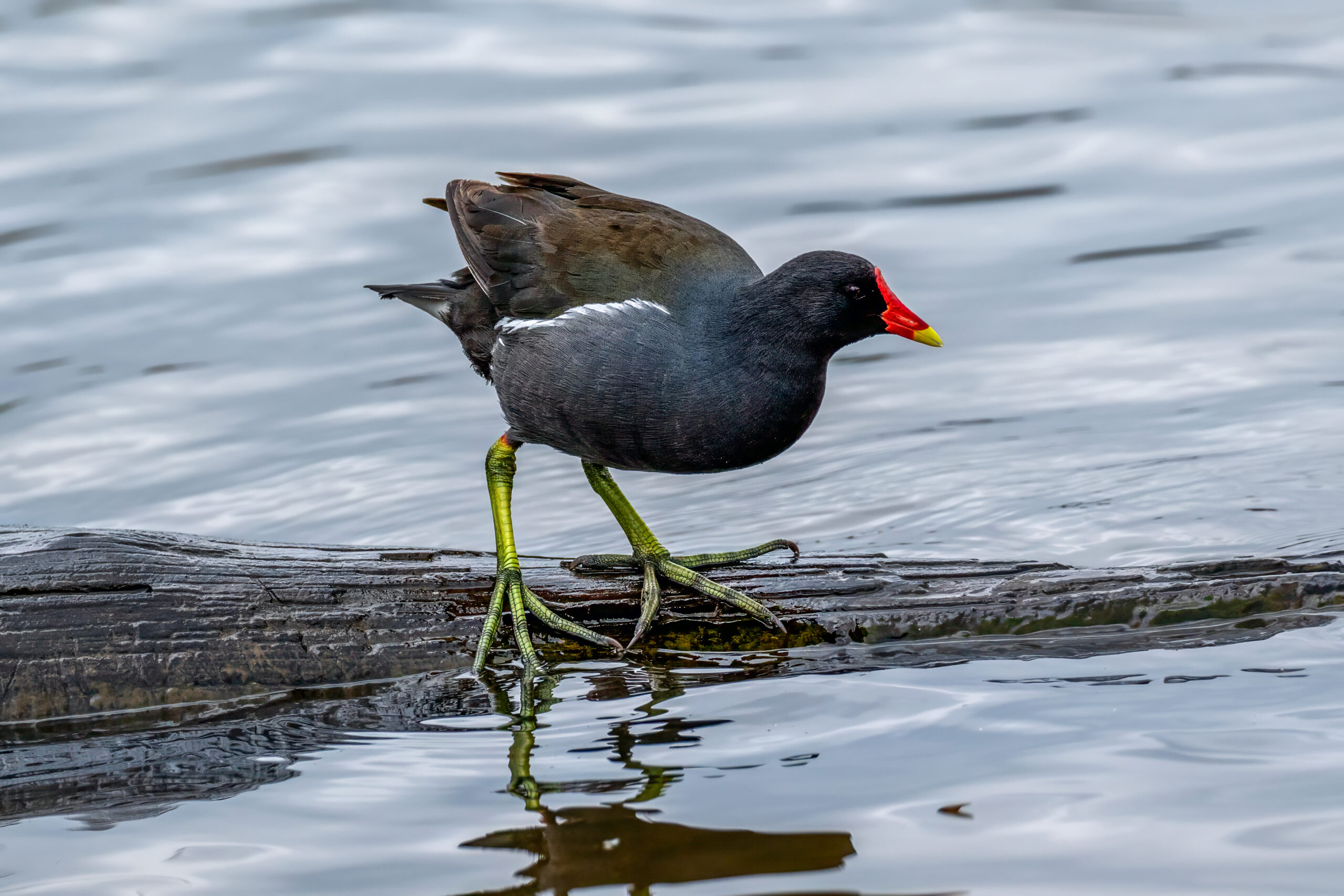Description
The white-breasted waterhen (Amaurornis phoenicurus) is a distinctive bird in the rail family commonly found in wetlands and marshes across South and Southeast Asia. This medium-sized waterbird measures about 28-33 cm (11-13 in) in length. It has a striking appearance with a white face, throat, and breast, contrasting with its dark brown to blackish upperparts and wings. The belly and undertail coverts are chestnut-colored, which is particularly noticeable when it takes flight. It has yellow legs and feet, and a red patch on the forehead. Its distinct plumage and appearance makes it unmistakable in its habitat.
Diet & habitat
The white-breasted waterhen inhabits a variety of wetland habitats, including marshes, swamps, rice paddies, and mangroves. It can even be found in urban environments with suitable wetland conditions. This species is often seen walking slowly along the edges of water bodies, searching for food. Its diet is diverse, consisting mainly of insects, small fish, aquatic invertebrates, and plant matter. It uses its long toes to walk on floating vegetation and to probe the mud for food, often turning over leaves and debris to uncover hidden prey.
Behavior
This bird is known for its secretive and shy behavior, often staying hidden in dense vegetation. Despite this, it can be quite vocal, especially during the breeding season, emitting a series of loud, repetitive calls. The white-breasted waterhen is primarily solitary or seen in pairs, but it may gather in small groups in areas with abundant food. It is mostly active during the early morning and late afternoon, avoiding the heat of the day. Despite often being seen walking on land, it is an excellent swimmer.
Nesting
The breeding season of the white-breasted waterhen varies by region but generally occurs during the monsoon season, which provides an abundance of food and suitable nesting sites. The nest is a platform of reeds and grasses, built close to the water’s edge. Females typically lay 4-8 eggs, which are incubated by both parents for about 19-22 days. After hatching, the chicks are precocial and can leave the nest shortly after birth, although they are cared for by their parents until they are fully fledged, which takes about 5-6 weeks.
Status
The white-breasted waterhen is currently listed as least concern by the IUCN Red List, due to its wide distribution and large population. However, habitat destruction and wetland drainage pose significant threats to local populations. Conservation efforts are necessary to protect wetland habitats to ensure the continued survival of this species.






